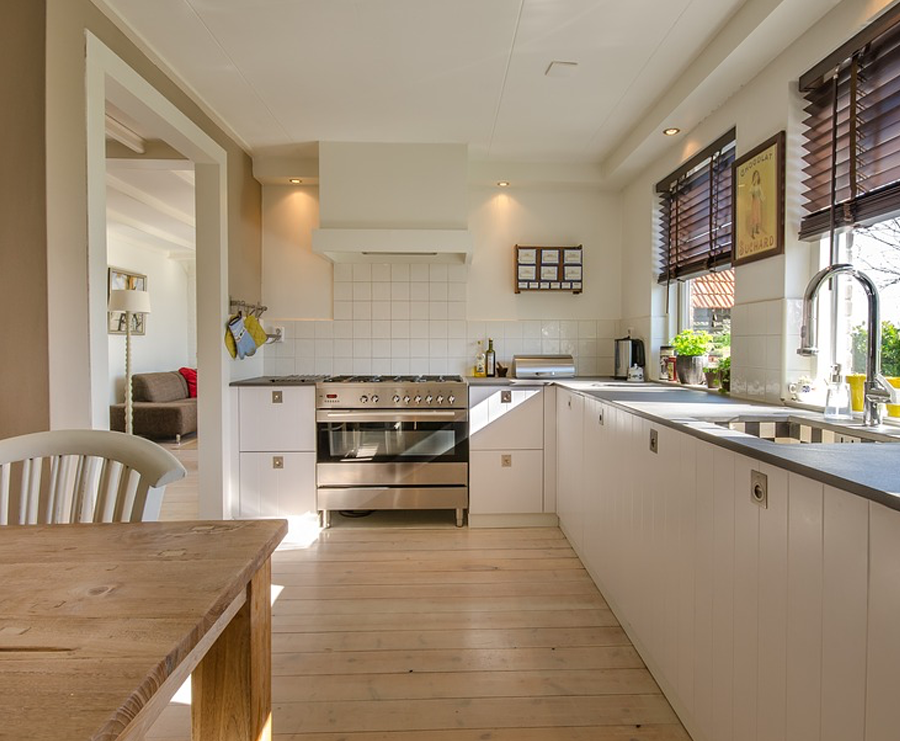How Retailers Price Kitchens
“How much is it going to cost?” is the key question we have on the tip of our tongue as we enter the dragon’s lair commonly known as a kitchen showroom. I’ve already decided what style I like as I’ve seen it on the TV, in a glossy magazine or even at friend’s house but is this dream kitchen really within my budget?

With so many sales and promotions across a varied number of national and independent retailers – surely I will find a good deal? Unfortunately for the average consumer here’s where reality starts and the dream can be blown away.
Retailers for many years have sought to gain market share and competitive advantage and in order to do so they have created a few tricks along the way. A kitchen sale in the vast majority of cases will need to be sales assisted for physical and inspirational design as well as for the education process of technical and product knowledge. After all it’s an investment purchase and you want to make sure it’s going to look fabulous and that it will fit!
So the next time you are in a kitchen showroom or researching a new kitchen here’s our top four retailer smoke and mirrors tricks to be aware of:
Marketing a retail price against a model kitchen. Generally speaking this is 8 units excluding worktops, decorative end panels, plinths, cornices, pelmets & handles. To advertise the lowest possible price, the retailer lists and prices the bare bones. So when you see a kitchen advertised for £1,500 for an 8 unit model kitchen just check exactly what is included. Each retailer uses a different 8 unit model kitchen – therefore advertised prices across retailers can be very difficult to compare.Differentiating the product specification. All products are available in different specification qualities. Retailers create price differentiation using these product qualities. For example kitchen cabinets are available in different thicknesses 15mm, 16mm & 18mm. Cabinets can and don’t include soft close hinges, colour co-ordinated sides, edging tape to prevent water ingress. Decorative PVC foils are used to create different door styles and finishes such as Solid Oak effect – it looks like oak but in fact it is an MDF or Chipboard door covered with the decorative foil. Premium doors are available in real wood construction and also painted and lacquered finishes. Make sure these are explained to you as the overall offering gives you a choice to fit your budget.Different door types. There are different door types available and which one you choose can affect the overall price. Drawer line doors, as the name suggests, has a drawer above the opening door. Hi-Line doors are full height and are generally much cheaper compared to the drawer line option. If you want drawers in your kitchen and are constrained by your budget you can choose a Hi-Line door option with a single 3 or 4 stack of drawers.Discounts and promotions. For years the kitchen industry has traded in the same way by offering massive percentage discounts in order to draw you, the consumer, into the kitchen showroom. As savvy consumer you have to be aware that most of the retailers offer a price-promise against other retailers’ quotes. Some retailers establish higher prices for a minimum period of 28 days in order to then advertise massive 50%, 60% and in some cases 70% discounts. You have to ask yourself if it is a true discount or just clever marketing? Research has also uncovered that to close a deal some retailers offer under-the-counter discounts on-top of the advertised promotion too. So if you don’t ask you won’t get!
At Kitchen-compare.com we have started to blow away these smoke and mirrors tactics by calculating pricing across retailers against three model kitchens. Our model kitchens include the cabinets, doors, handles, decorative end panels, worktops, plinths, pelmets, cornices. We feel this is a good starting point for a consumer to understand what type of kitchen is within their budget.
There are product specification differences and we tell you about them! You can decide whether a 15mm or 18mm cabinet with or without soft close hinges and with a solid oak or oak effect door is important to you. With our website we have collated styles and looks and presented a common kitchen model with pricing.
A kitchen will always involve personal choice for design, quality and service so we leave this decision up to you, the discerning consumer!
15th Mar 2016
